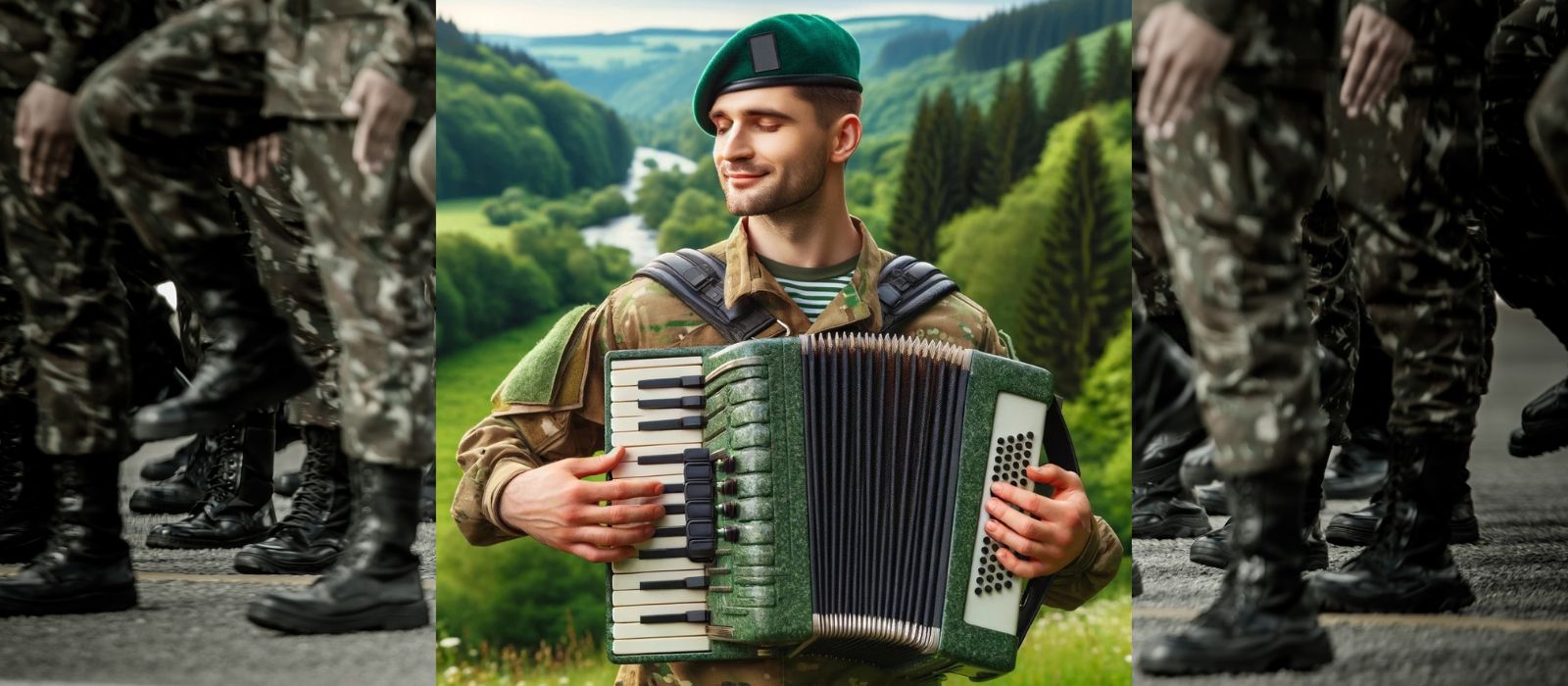The accordion is an instrument that has been used in many different cultures and genres around the world. Arab countries are no exception, and their take on the classic instrument brings a unique flavor to music. Let’s explore the history and characteristics of Arabic accordion music.
A brief history of Arabic accordions
The accordion was first brought to the Middle East by European missionaries during the 1800s. However, it did not become popular until much later; it wasn’t until after World War II that accordions became more widely adopted by musicians in Arab countries.
During this time, French-style diatonic accordions were commonplace and heavily associated with military bands in Algeria, Morocco, Tunisia, and Libya.
Accordions were introduced to the Arabic folk music scene in the early 20th century. Initially, European-made accordions were not altered to play Arabic music scales known as MAQAM until the 1950s when the first custom-tuned, quarter-tone accordion was brought to Lebanon.
This is when accordions became inseparable from the Arabic string orchestras. Arab accordion music gained even more popularity when the famous Egyptian singer and composer Mohammed Abd El-Wahhab began composing Arabic accordion pieces.
Arabic accordion music had a strong influence on Turkish and Balkan folk music. Folk songs like Sevdah In Bosnia are played on accordions and violins and in many ways resemble the Arab accordion melodies.
Quarter tone accordion, what is it?
The accordion, a classic instrument known for its playful sound, has been redesigned to greater sophistication! The quarter-tone tuned accordion is explicitly created with Arabic music in mind; it works by fine-tuning standard scales like Bb and C# into sections 1/4th of a note apart.
This allows the player to play complex compositions – traditionally outside the range of western minor and significant modes – while emitting beautiful Eastern melodies on this timeless instrument.
The popularity of Maqam is growing
Maqam-tuned piano accordions have surged in popularity, with a rich cultural and musical heritage being revived by musicians and conservatories across the Middle East. Leading this movement is The Maqam Project – an ambitious initiative to safeguard Arab music for future generations.
Started by the Jews of the Arab world (mainly of Syrian and Egyptian heritage) who now live in the West, this movement is reviving and nourishing Maqam music. “According to ancient Sephardi custom, every Torah portion is associated with a musical mode called a maqam, a set of notes, the relationships between them, traditions, patterns, and expression.”
Experience the thrilling power of Arabic music firsthand through Inside Arabic Music! Follow two musical “insiders” as they explore legendary Egyptian diva Umm Kulthum’s concerts, traditional taqsim improvisations and more in an effort to decipher this art form. Embrace your inner musician with Inside Arabic Music. We recommend this phenomenal book to not only accordionists but anyone who wants to get acquainted with a unique world of Arab music.
The popularity of maqam music and maqam tuned piano accordions is not only growing in the Middle East but in the North Americas and globally as well. Oxford Maqam is one example of maqam revival efforts in the UK. The charming tunes of Maqam are different and their alluring and relaxing tones are tempting to accordionists.
Even though you can’t always buy a maqam tunned accordion in the US or Canada, you can get one tuned to a maqam scale.
What is Maqam tuning and what does it sound like?
Rai Music and the Accordion
The Arab world is known for its rich literal and poetic heritage. When spoken poetry is accompanied by traditional folk instruments then we get an even more captivating effect similar to the Hip Hop genre in the west through which artists can express a variety of feelings, opinions, and emotions.
Rai Music a vibrant form of North African poetry and music originating in Algeria centuries ago, is becoming increasingly popular throughout the Arab world. With its signature accordion accompaniment since the 19th century, this lively genre has been gaining global attention in recent decades as an expression of culture through song that speaks to both heart and soul.
Today, contemporary Rai performers can’t even imagine their bands without accordions. With several movements that are pushing for Rai music revival, accordions are gaining more popularity again in all parts of the world where the Arabic language is spoken.
The quarter tone accordion is having a moment in the Western world as more and more accordionists are drawn to the unique sound of Arabic maqam music. This genre of music is enjoying a revival across the Middle East and North Africa, and now skilled players are bringing their talents to Europe and North America.
If you’re an accordionist, why not try your hand at playing an Arabic tune? You might just find yourself hooked on this enchanting style of music.
Dino is a hobbyist accordionist who loves music, photography, architecture, design and a slew of other fun things. He decided to launch this blog due to an increasing popularity of the accordion. He learned how to play the accordion by ear as a child and then progressed on to keyboards and eventually a drum set. He grew up in the Balkans and now lives in California where he occasionally plays the accordion at birthday parties and NYE celebrations. He now shares his love for the accordion through this blog.







Leave a Reply